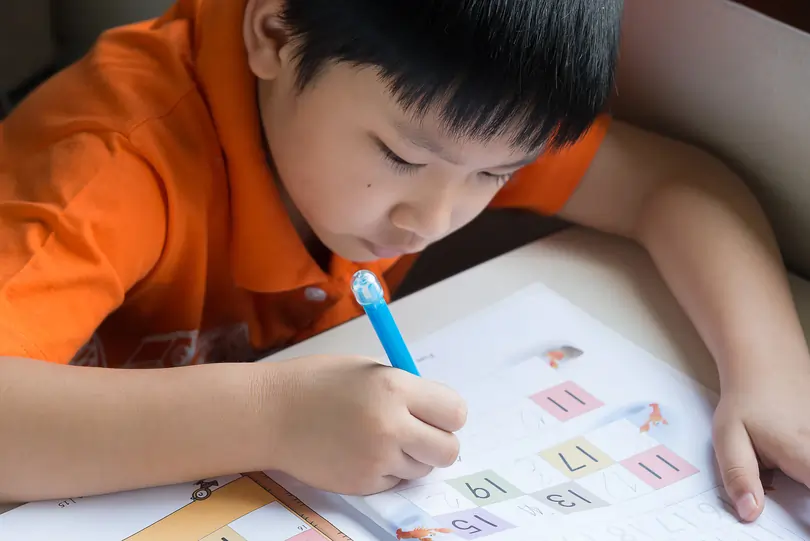Singapore Maths vs Traditional Maths: What sets them apart?
- Tags:
- Primary Maths

In the ever-evolving world of education, different teaching methodologies emerge to cater to the diverse learning needs of students. Two prominent approaches, Singapore Maths and Traditional Maths, have gained attention worldwide.
In this article, we will explore the differences between Singapore Maths and Traditional Maths and shed light on which might be the better approach for learners.
What is Singapore Maths?
Singapore Maths, also known as the Singapore Model Method, is an innovative approach to teaching mathematics that originated in Singapore. It is renowned for its focus on problem-solving and critical thinking. This method emphasises the understanding of mathematical concepts rather than rote memorisation.
The Singapore maths approach
Problem-solving approach
One of the fundamental differences between Singapore Maths and Traditional Maths is their approach to problem-solving. In Singapore Maths, students are encouraged to solve complex problems by breaking them down into simpler, manageable steps. This cultivates a deep understanding of mathematical concepts.
Concrete-Pictorial-Abstract (CPA) method
Singapore Maths uses the Concrete-Pictorial-Abstract (CPA) method, which means students start by manipulating physical objects (concrete), then move to pictorial representations, and finally, they work with abstract symbols. This gradual progression helps students grasp mathematical concepts thoroughly.
Emphasis on mastery
Singapore Maths places a strong emphasis on mastery of topics before progressing to more advanced ones. Students are not rushed through the curriculum but are given the time they need to fully understand each concept.
Use of bar models
A distinctive feature of Singapore Maths is the use of bar models to visualise and solve problems. These models make complex problems easier to understand and solve, fostering better comprehension.
Curriculum structure
Singapore Maths has a well-structured curriculum that builds on previously learned concepts. This logical progression ensures that students have a solid foundation before moving on to more complex mathematics.
What is Traditional Maths?
Traditional maths, on the other hand, follows a more conventional approach to teaching mathematics. It often involves memorising formulas and procedures. Traditional maths has been the standard approach in many educational systems for decades.
The traditional maths approach
Rote Memorisation
In traditional maths, rote memorisation of formulas and procedures is common. Students often learn algorithms without necessarily understanding the underlying concepts. This can hinder their ability to apply mathematical knowledge to practical situations.
Fixed curriculum pace
Traditional maths typically adheres to a fixed curriculum pace. All students progress through the same topics at the same speed. This approach may leave some students struggling to keep up while others may feel bored due to a lack of challenge.
Key differences
Now that we've explored both approaches let's highlight the key differences:
1. Teaching philosophy
Singapore Maths promotes a deeper understanding of mathematics through problem-solving and mastery-based learning. Traditional Maths often relies on memorisation and a fixed curriculum pace.
2. Application-oriented vs. procedure-oriented
Singapore Maths encourages students to apply mathematical concepts in real-life scenarios. Traditional Maths may focus more on following procedures without necessarily understanding their applications.
3. Individualised learning
Singapore Maths allows for more individualised learning, letting students progress at their own pace. Traditional Maths often follows a one-size-fits-all approach.
4. Critical thinking vs. rote learning
Singapore maths nurtures critical thinking skills, while traditional maths may lean towards rote learning.
So, we can say that in the ongoing debate of Singapore Maths vs. Traditional Maths, it's clear that Singapore Maths offers a unique approach that prioritises understanding and problem-solving. While Traditional Maths has its merits, the benefits of Singapore Maths cannot be denied. Educators and parents should consider the individual needs of students when choosing a maths curriculum.
Frequently Asked Questions (FAQs)
Is Singapore Maths only for advanced students?
No, Singapore Maths is suitable for students of all levels. It can be adapted to meet the needs of individual learners.
Is Singapore Maths the only effective math teaching method?
There are various effective maths teaching methods, but Singapore Maths has gained recognition for its success in promoting deep understanding and problem-solving skills.
Does Singapore Maths lead to better standardised test scores?
Research suggests that students taught using Singapore Maths tend to perform well on standardised tests due to their deeper understanding of mathematical concepts.
 SG
SG  VN
VN 














